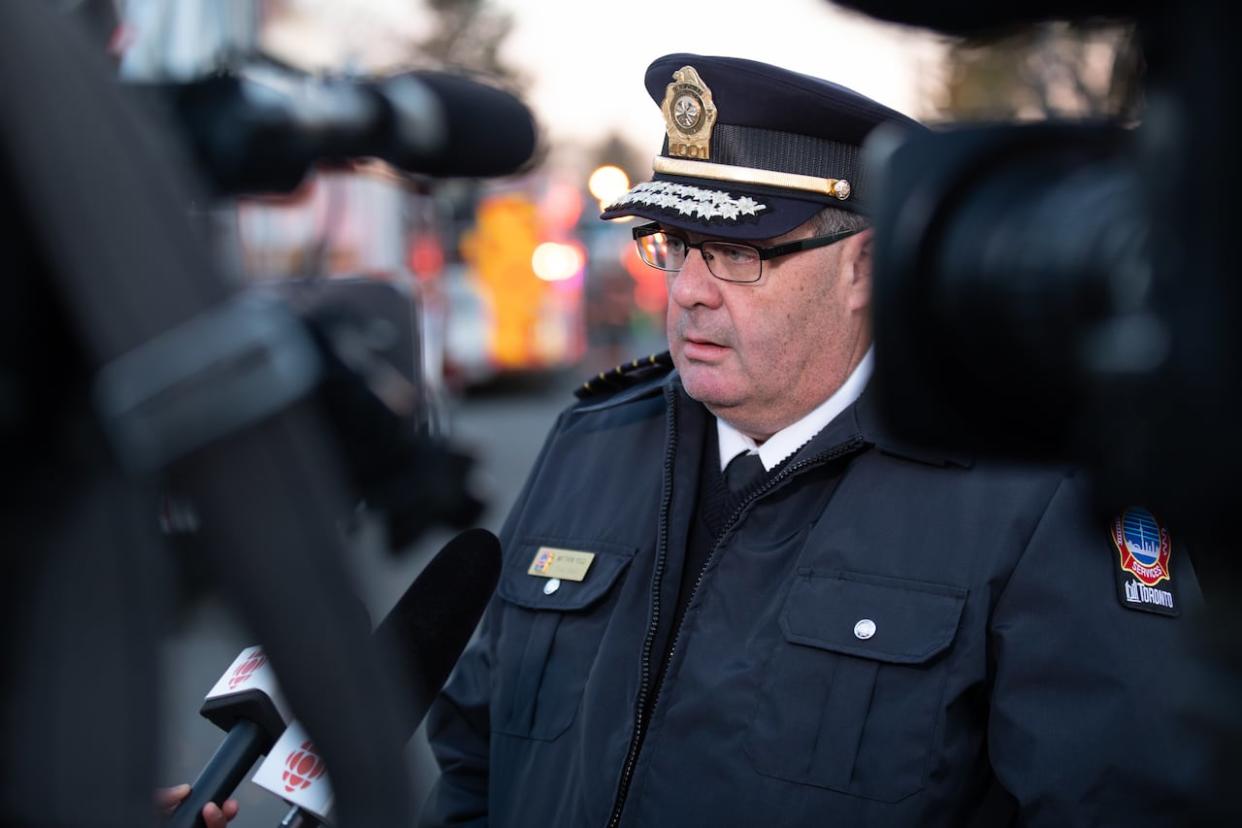After subway e-bike blaze, Toronto fire chief shares tips to avoid battery fires

Toronto's fire chief is sharing safety tips to avoid fires sparked by lithium ion batteries after a subway train was evacuated when an e-bike caught fire on Sunday.
A man suffered non-life-threatening injuries in the fire at Sheppard-Yonge subway station around 3 p.m. Sunday, which filled several subway cars with smoke. No one else was injured and trains were moving through the station again about an hour later.
The fire was filmed by bystanders and shared on social media. Lithium ion batteries are rechargeable batteries that pack enough energy to power small electric vehicles.
Toronto Fire Chief Matthew Pegg told reporters Tuesday that the battery ignited into a "significant and aggressive fire" only seconds after it started to emit visible gasses, which is typical of the battery type.
Pegg says fires started by lithium ion batteries increased significantly in 2023. In 2022, there were 29 fires in Toronto started by lithium ion batteries, in 2023 that number increased to 55 — a nearly 90 per cent increase. He noted the batteries are safe when used properly, but their failure can pose an immediate risk to people in the area.
"We have already experienced both loss of life and critical injuries as a result of these fires here in Toronto," Pegg said.
Lithium ion fires were a growing concern prior to Sunday's subway fire. In October, the Office of the Fire Marshal told CBC Toronto it has also noticed an increase in lithium ion battery fires provincewide. At the time, CBC Toronto spoke to experts who explained how people can best avoid a fire sparked by their battery.
Asked if the TTC might crack down on lithium ion powered vehicles being brought on trains following the fire, a spokesperson said the transit agency will determine next steps after it has a clearer understanding of what happened Sunday.
"We are examining similar incidents of e-bike fires that have occurred on transit systems in North America and Europe," spokesperson Adrian Grundy said in an email.
Pegg says the fire department has created an internal working group that has developed operational policies for responding to these types of fires. The department is also developing a safety campaign that will launch in 2024.
What to do if you own a lithium ion battery
For those with lithium ion batteries in their devices, Pegg shared the following fire safety tips:
Only use batteries and charging cords that are designed and approved by the device manufacturer.
Do not charge a device under your pillow, on a bed or a couch.
Avoid overcharging devices and unplug it when it reaches 100 per cent charge.
Do not place batteries in direct sunlight or leave them in hot vehicles.
Store them away from anything that can catch fire.
Avoid crushing, bending or dropping a device or charge.
Pegg also said people should stop using a battery if the following happens:
Any odour is coming from the battery.
The colour or shape of the battery has changed.
Abnormal amounts of heat coming from the battery.
Any leaking or noise coming from the battery.
Union calls for more staffing in light of fire
ATU Local 113, the union that presents 12,000 transit workers across Toronto, said in a statement issued Tuesday that the fire could have been much worse if the train had been partially or fully in the tunnel at the time of the fire because it had a single crew member.
If the train was in the tunnel, the crew member would have been cut off from passengers by the flames, the union said. That would mean they would have evacuated themselves through the front of the train while passengers were left cut off and unassisted by trained personnel.
"When and if passengers were able to evacuate themselves they would be going into a tunnel filled with smoke and with a live electrified third rail," according to the union.

The union representing transit workers used the fire as an opportunity to call for increased staffing on trains. (Evan Mitsui/CBC)
In light of this, the union is calling on the TTC to have two people operate trains on Line 1, as is the case on Line 2. If there were two operators and the fire happened in the tunnel, one operator on either end would likely be able to help passengers, the union says.
Stuart Green, a TTC spokesperson, says the agency is continuing to engage with union partners on practical safety improvements. Green said having one train operator is a global subway best practice and has been proven to reduce operator injuries by protecting them from safety risks.
"We disagree with the assertion that [one person train operation] played any role in this incident," Green said.

